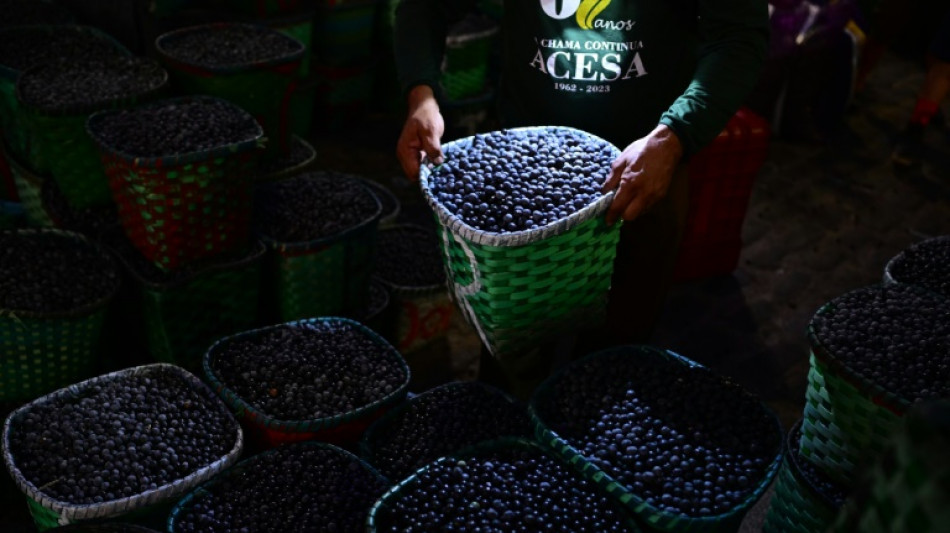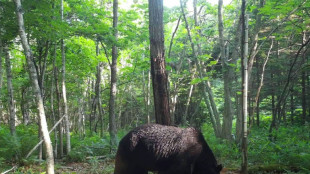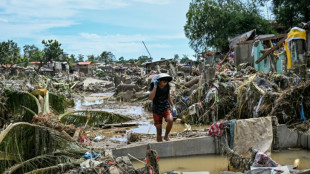
Five things to know about 'forest COP' host city Belem

The eyes of the world are on Belem, a gateway city to the Brazilian Amazon playing host to what has been dubbed the "Forest COP" climate conference starting Monday.
The city of 1.4 million got its name from Bethlehem, the birthplace of Jesus Christ. In Portuguese, it translates as Belem.
Under a law promulgated Tuesday by President Luiz Inacio Lula da Silva, it will be the symbolic capital of the country for the duration of the conference, which is expected to gather some 50,000 delegates from around the world from November 10-21.
Here are five things to know about Belem.
- Love of Acai -
Acai, a so-called super fruit derived from a palm tree, has become trendy globally in recent years, and is reputed to hold energizing and antioxidant properties.
In Belem, it is a staple with just about every meal.
Resembling a large blueberry, the fruit is harvested in the Amazon rainforest that encircles the city, tons of it unloaded every day at a dock near the popular Ver-o-Peso market -- a major tourist attraction.
In restaurants, crushed Acai in the form of a thick purple sauce with an earthy, somewhat tart taste, is served as a side with many typical dishes.
It is a favorite with pirarucu, an Amazonian freshwater fish that can grow up to three meters long.
- Catholic fervor -
Belem has faced logistical difficulties -- mainly in hotel room shortages -- in hosting the 30th Conference of the Parties (COP) to the United Nations Framework Convention on Climate Change (UNFCCC).
Yet every October, it hosts a religious ceremony that gathers hundreds of thousands of Catholic devotees -- most of whom are from Belem or nearby.
This year, the Cirio de Nazare, recognized as an "intangible cultural heritage" by UNESCO, set a record with 2.6 million attendees.
The festivities honor Our Lady of Nazareth, the patron saint of Belem, nicknamed the "Queen of the Amazon" by locals.
Her image is ubiquitous in the city, where religious references and imagery abound.
- Where are the trees? -
Arriving in Belem by plane, one is struck by the emerald green forest growth surrounding a vast riverine metropolis.
Paradoxically, less than half of the city's inhabitants live on tree-lined streets -- only 45.5 percent, according to Brazil's IBGE statistics institute.
The national average is 66 percent.
Scientists have pointed to a growing trend of higher-than-normal urban warming in the city -- already hot and humid -- due to the shortage of heat-absorbing greenery and high asphalt coverage.
- Poverty -
More than half the population of Belem (57.1 percent) lives in poor and densely populated neighborhoods known as favelas.
This is the highest rate among Brazilian metropolises, according to the IBGE.
- Music -
Belem's most beloved star is Fafa de Belem -- one of several female singers to have put the otherwise little-known city on Brazil's cultural map.
The state of Para, of which Belem is the capital, is also the birthplace of Carimbo, an Afro-Indigenous music genre also recognized by UNESCO.
S.Yang--SG

 London
London

 Manchester
Manchester
 Glasgow
Glasgow
 Dublin
Dublin
 Belfast
Belfast
 Washington
Washington
 Denver
Denver
 Atlanta
Atlanta
 Dallas
Dallas
 Houston Texas
Houston Texas
 New Orleans
New Orleans
 El Paso
El Paso
 Phoenix
Phoenix
 Los Angeles
Los Angeles



